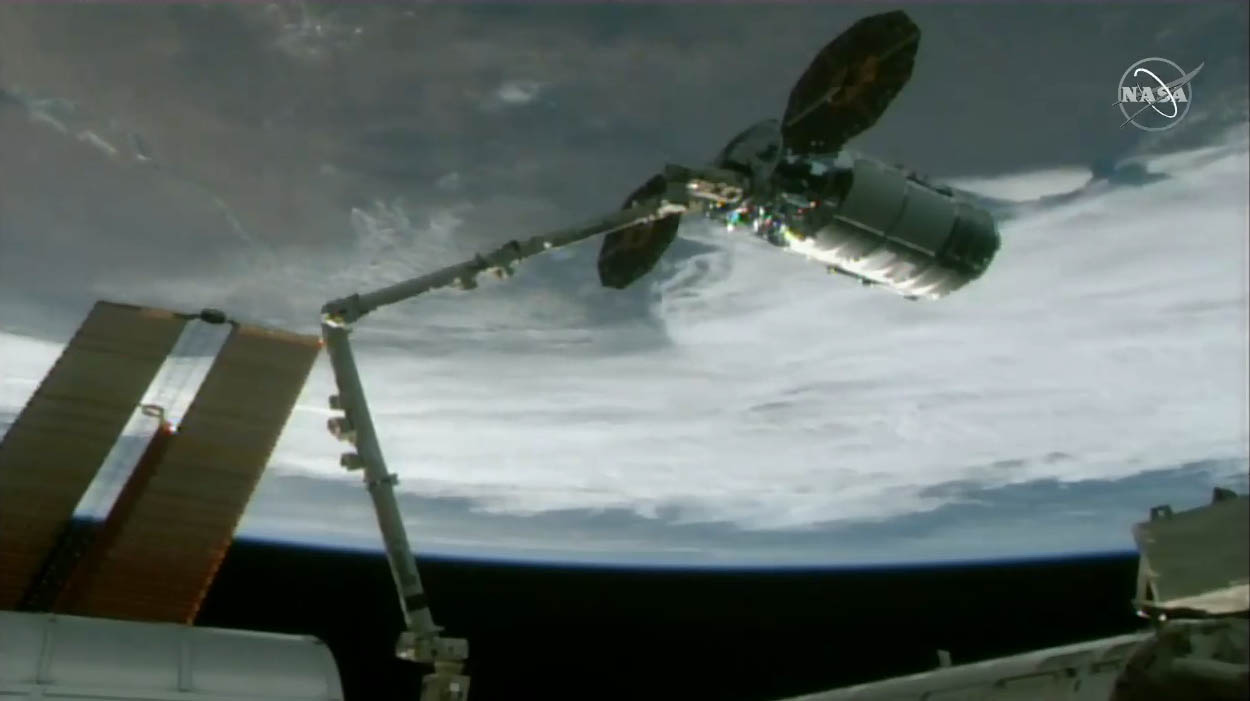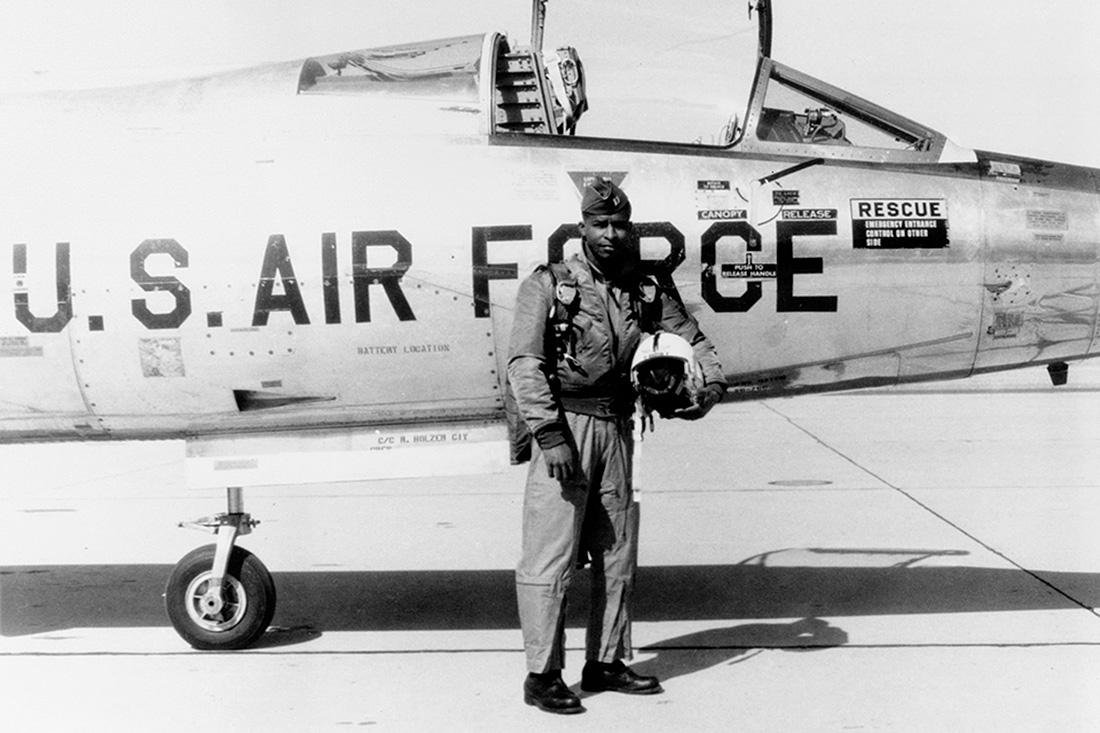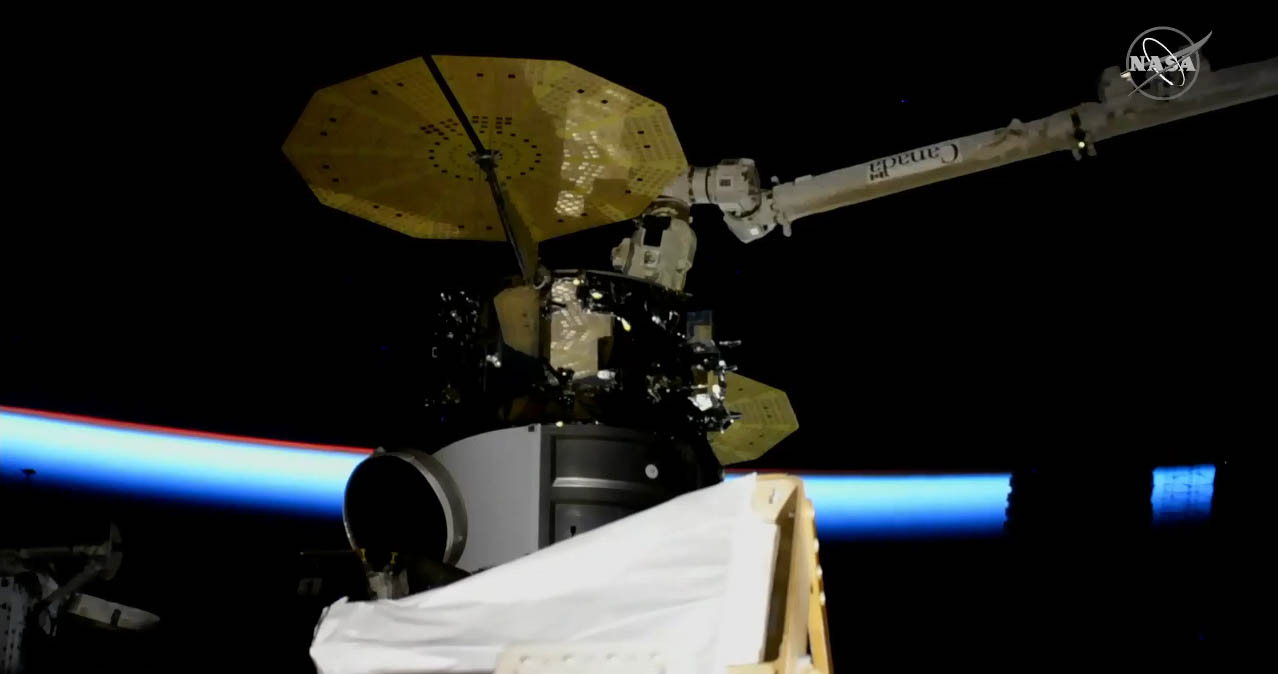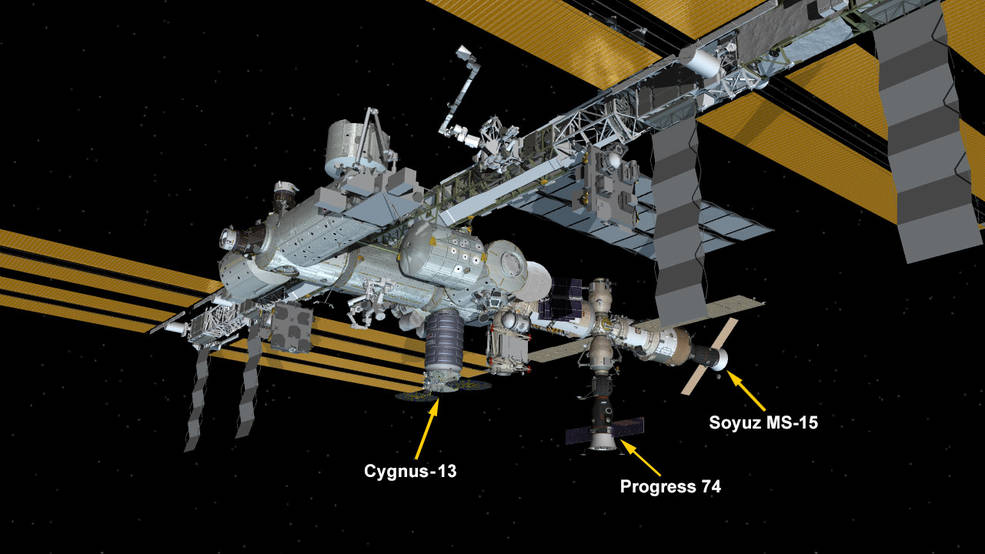Cygnus cargo ship delivers cheese, candy and science gear to space station astronauts
A Northrop Grumman Cygnus cargo ship arrived at the International Space Station Tuesday (Feb. 18) to make a special delivery of cheese, candy and science gear for NASA.
The uncrewed Cygnus NG-13 spacecraft was captured with a station robotic arm by NASA astronaut Andrew Morgan, one of three Expedition 62 crewmembers currently living aboard the orbiting lab. Northrop Grumman launched the Cygnus spacecraft into orbit on an Antares rocket on Saturday (Feb. 15) from NASA's Wallops Flight Facility on Wallops Island, Virginia.
"Cygnus capture complete," Morgan radioed NASA's Mission Control at the Johnson Space Center in Houston as he plucked the gleaming silver Cygnus from space at 4:05 a.m. EST (0905 GMT). The two spacecraft were sailing 265 miles (426 kilometers) above southeast Russia at the time.
Related: See amazing launch photos of Antares and Cygnus NG-13!
More: Bacteria & bone: Here's the science launching on Cygnus NG-13

Northrop Grumman named the Cygnus NG-13 spacecraft the "S.S. Robert H. Lawrence" after the late Maj. Robert H. Lawrence, Jr., who made history in 1967 as the first African American ever selected to be an astronaut when he was picked to fly for the U.S. Air Force's Manned Orbiting Laboratory, a planned military space station. But Lawrence died in a training accident later that year and never had the chance to fly in space.
"As the first African-American to be selected as an astronaut by a national space program, Robert defined possible against the odds when he was selected for the U.S. Air Force's Manned Orbital Laboratory project in 1967," Morgan said after capturing the Cygnus. "Tragically,Major Lawrence died in an aircraft training accident that same year. But while Robert never launched into Earth orbit, he remains a valuable symbol of progress and inclusion in human spaceflight, and it's our honor to welcome the S.S. Robert H. Lawrence, Jr. aboard the ISS."

The Cygnus NG-13 spacecraft is carrying more than 7,500 lbs. (3,400 kilograms) of science experiments, supplies and other vital gear for the station's three-person Expediton 62 crew. In addition to Morgan, the crew includes NASA astronaut Jessica Meir and Russian cosmonaut Oleg Skripochka, who commands the mission.
Get the Space.com Newsletter
Breaking space news, the latest updates on rocket launches, skywatching events and more!
Cygnus is delivering some novel science gear to the station, including 20 different experiments. Among them is Mochii, a small scanning electron microscope that is the first ever in space. It will help astronauts find out what materials are made of in orbit, rather than waiting months for an analysis on the ground. Other equipment will be used for bone loss studies and to test viruses that can target specific bacteria as a potential future medication.
Among the science experiments are some very special treats for the astronauts. There's fresh fruit and candy to satisfy the crew's sweet tooth.
And then there's the cheese.
For the first time, NASA's Food Lab at the Johnson Space Center was able to pack some hard cheeses in a cooler-like "cold bag" for the astronauts. The station crew has been requesting Parmesan and other hard cheeses since September as an alternative to the butter-like spread currently available. But finding a fresh hard cheese just before a launch, and then keeping it fresh for the days-long trip to the station was a challenge.

The Cygnus NG-13 cargo ship is connected to the International Space Station's Unity module on an Earth-facing port as a sunset begins in space on Feb. 18, 2020.

An uncrewed Northrop Grumman Cygnus NG-13 cargo ship is captured by a robotic arm at the International Space Station to deliver more than 7,500 lbs. (3,400 kilograms) of supplies to the orbiting laboratory on Feb. 18, 2020.

This NASA graphic shows the location of the Cygnus NG-13 cargo ship on the Unity module after its arrival at the International Space Station on Feb. 18, 202. Visiting Russian spacecraft are also shown.
Ryan Dowdy, food systems manager at the Food Lab, told Space.com his team was able to find Wisconsin sharp cheddar, Parmesan and Fontina cheeses (about two wedges each) from a local supermarket and develop a new process to add them as "late stowage" 24 hours before launch. They were packed in refrigerated cold bag just like the fruit (and some biological science gear) and launched to the station.
Dowdy said his team was not able to find Manchego cheese, a special crew request, as previously reported, but does hope it will give the astronauts a little reminder of home.
"The cheese that we do send normally in the standard menu is a shelf stable cheddar cheese spread," Dowdy said. "And that is worlds of away from a wedge of Parmesan cheese, as you can imagine. Sending this is a reminder of home."
- Cygnus cargo ship leaves International Space Station, begins new mission in orbit
- Antares rocket launches Cygnus cargo ship on marathon mission for NASA
- This NASA experiment shows promise for farm-fresh foods in space
Email Tariq Malik at tmalik@space.com or follow him @tariqjmalik. Follow us @Spacedotcom, Facebook and Instagram.
OFFER: Save at least 56% with our latest magazine deal!
All About Space magazine takes you on an awe-inspiring journey through our solar system and beyond, from the amazing technology and spacecraft that enables humanity to venture into orbit, to the complexities of space science.
Join our Space Forums to keep talking space on the latest missions, night sky and more! And if you have a news tip, correction or comment, let us know at: community@space.com.

Tariq is the Editor-in-Chief of Space.com and joined the team in 2001, first as an intern and staff writer, and later as an editor. He covers human spaceflight, exploration and space science, as well as skywatching and entertainment. He became Space.com's Managing Editor in 2009 and Editor-in-Chief in 2019. Before joining Space.com, Tariq was a staff reporter for The Los Angeles Times covering education and city beats in La Habra, Fullerton and Huntington Beach. In October 2022, Tariq received the Harry Kolcum Award for excellence in space reporting from the National Space Club Florida Committee. He is also an Eagle Scout (yes, he has the Space Exploration merit badge) and went to Space Camp four times as a kid and a fifth time as an adult. He has journalism degrees from the University of Southern California and New York University. You can find Tariq at Space.com and as the co-host to the This Week In Space podcast with space historian Rod Pyle on the TWiT network. To see his latest project, you can follow Tariq on Twitter @tariqjmalik.










